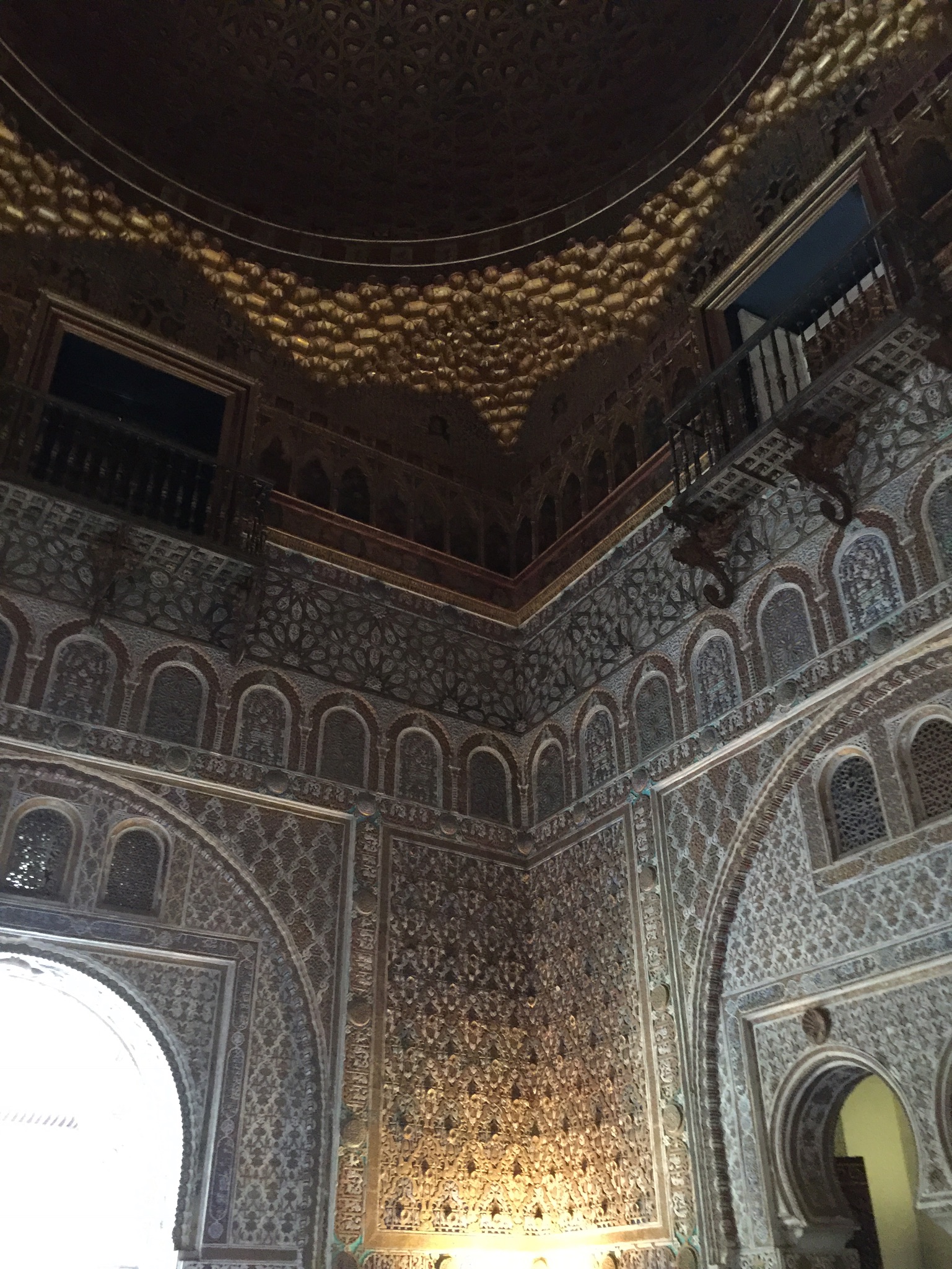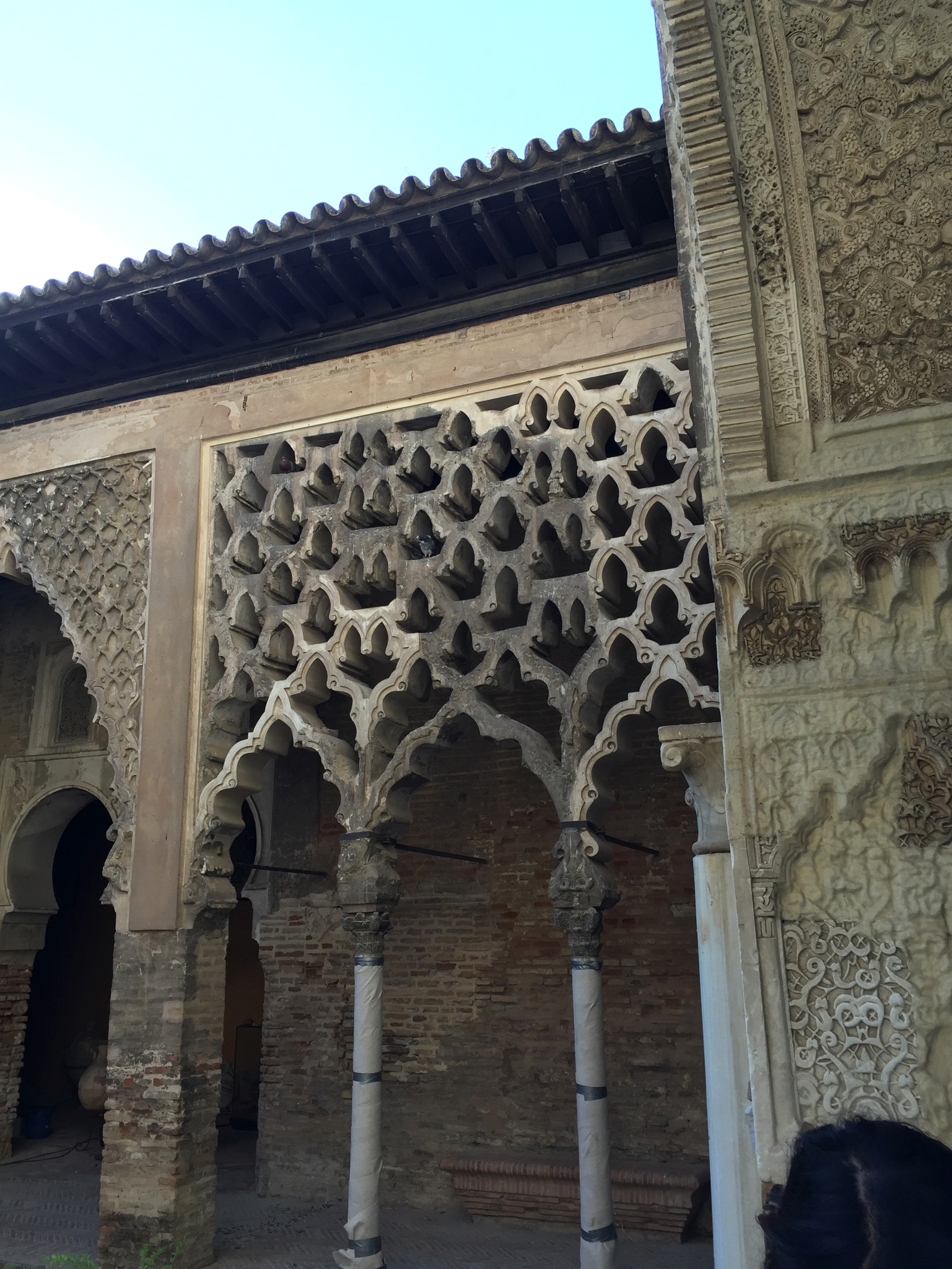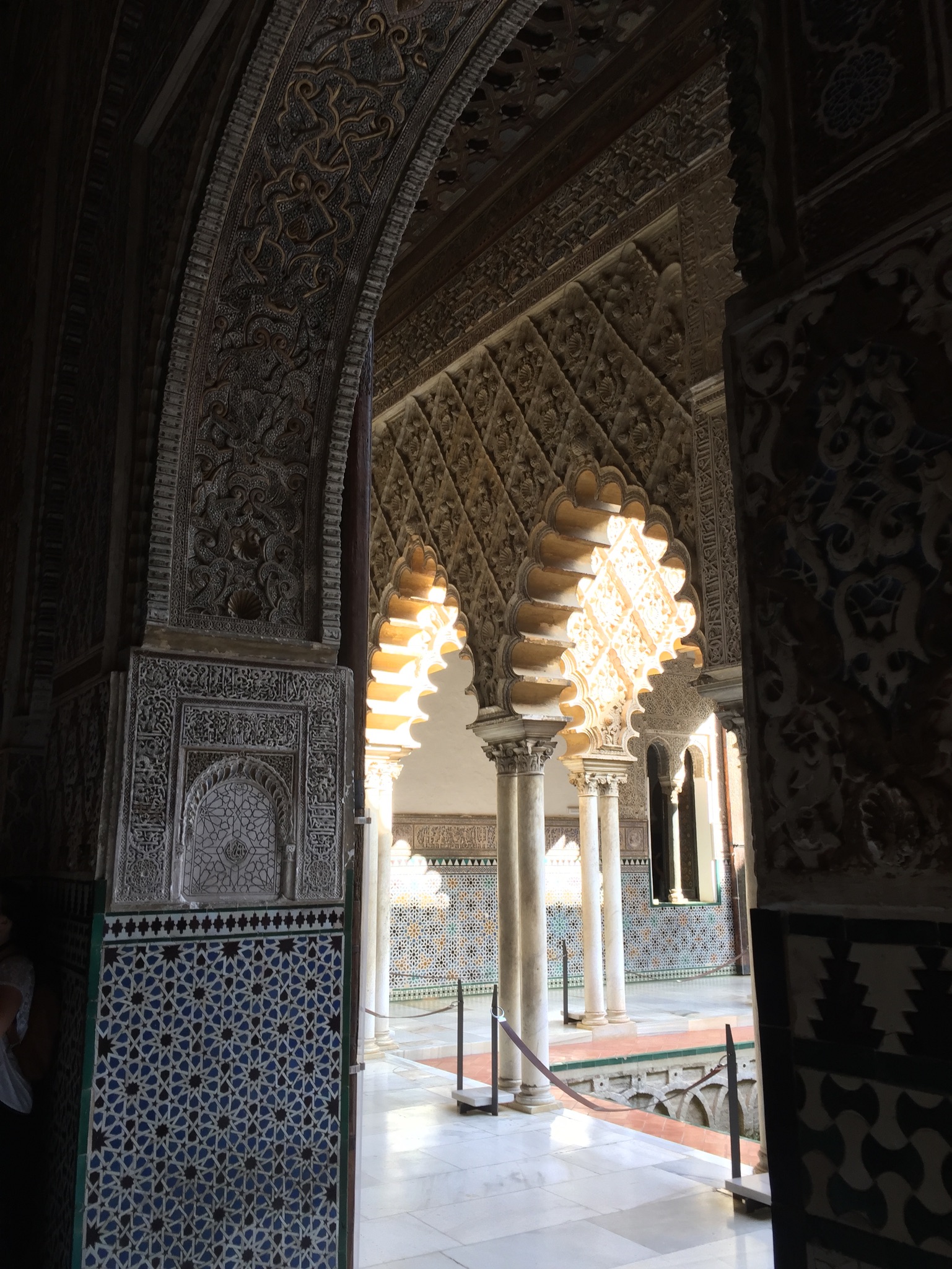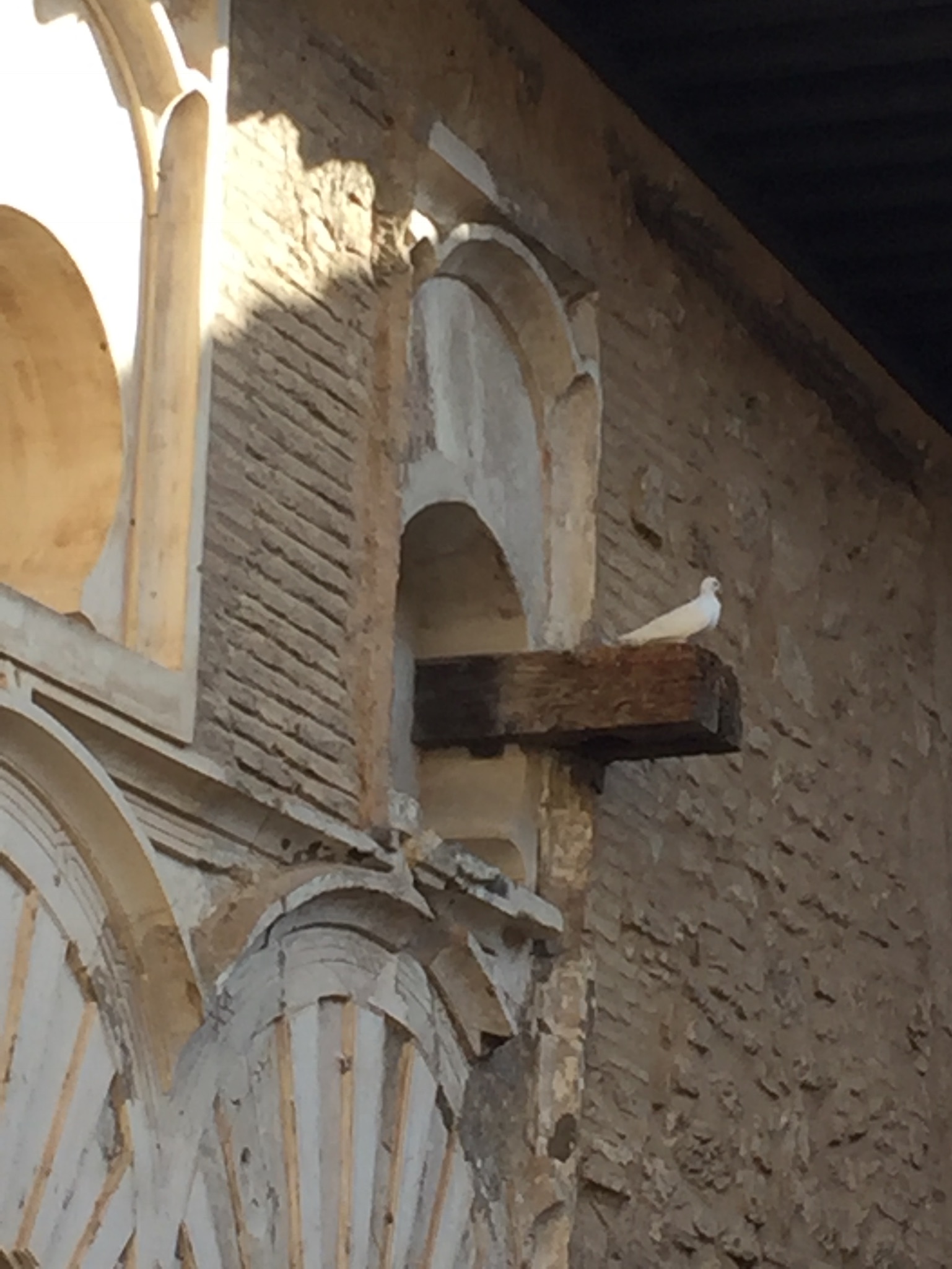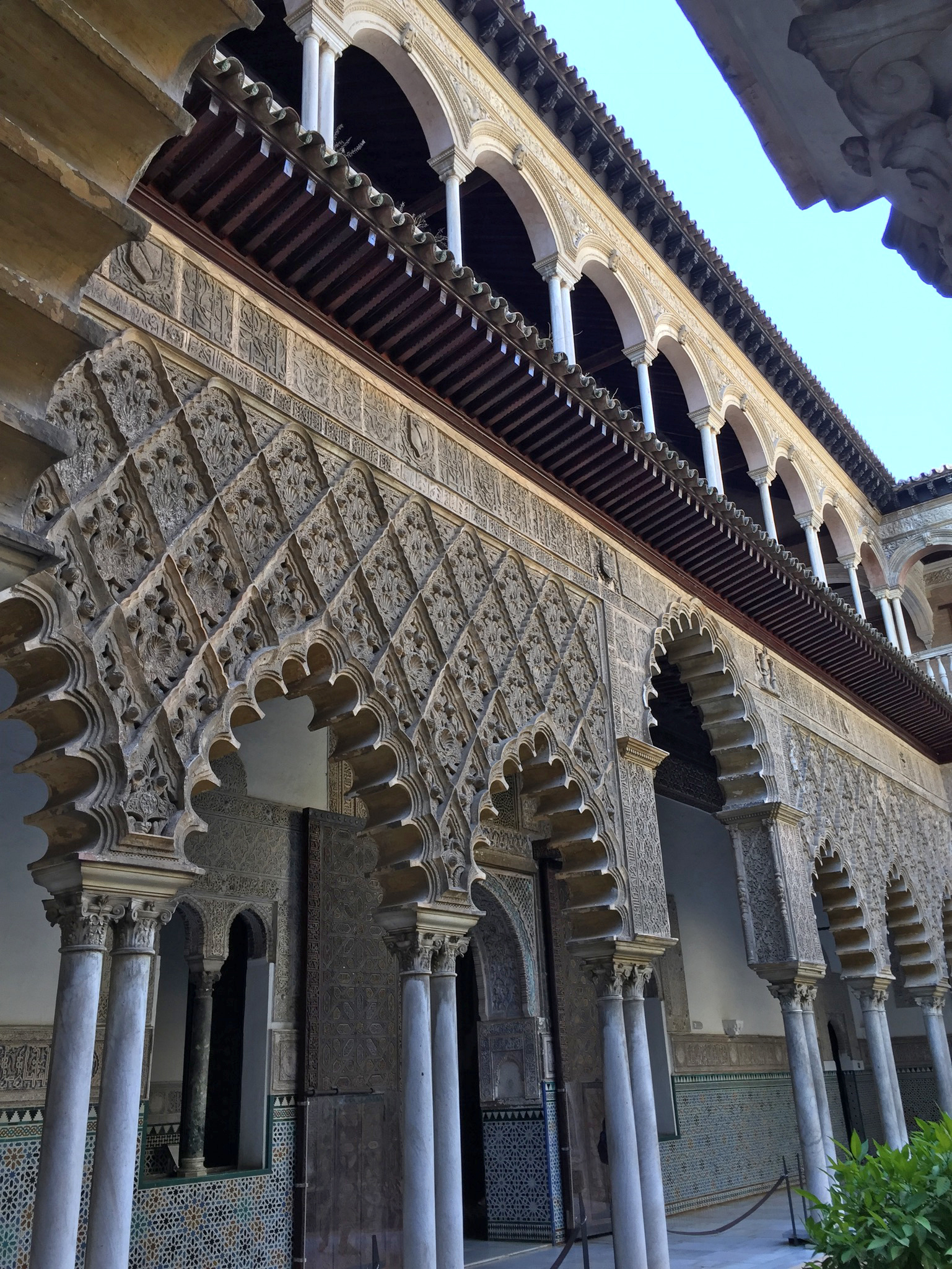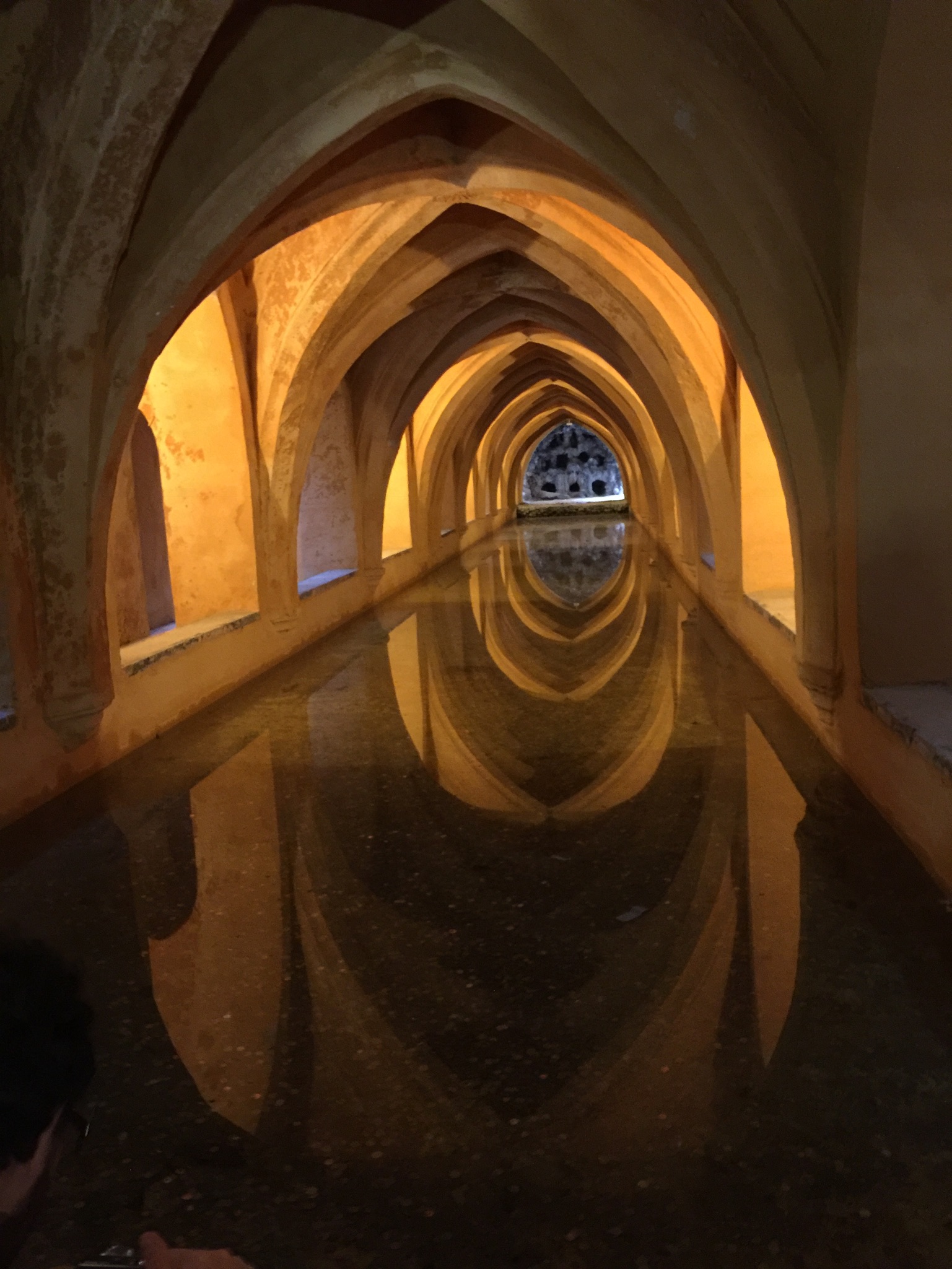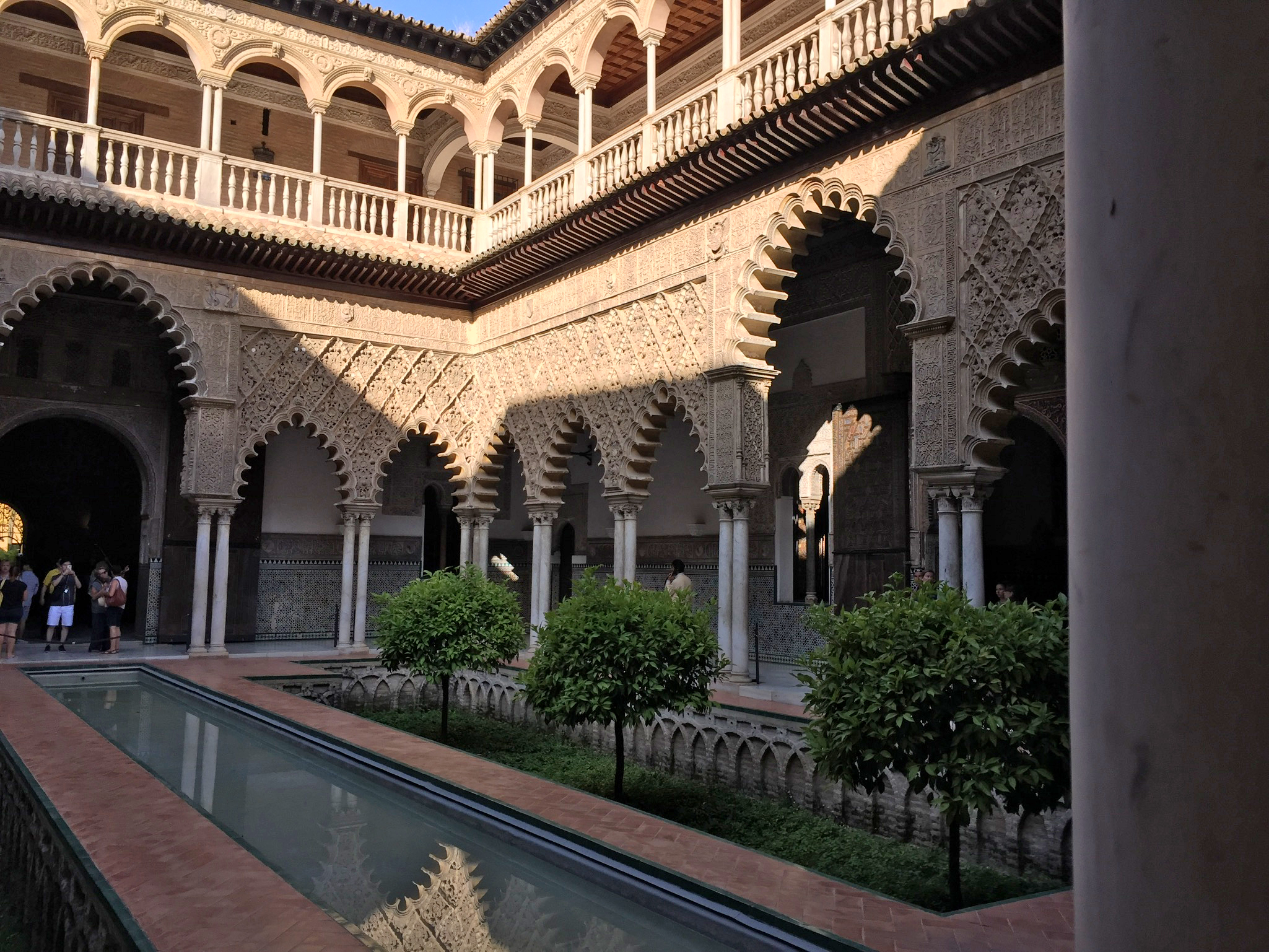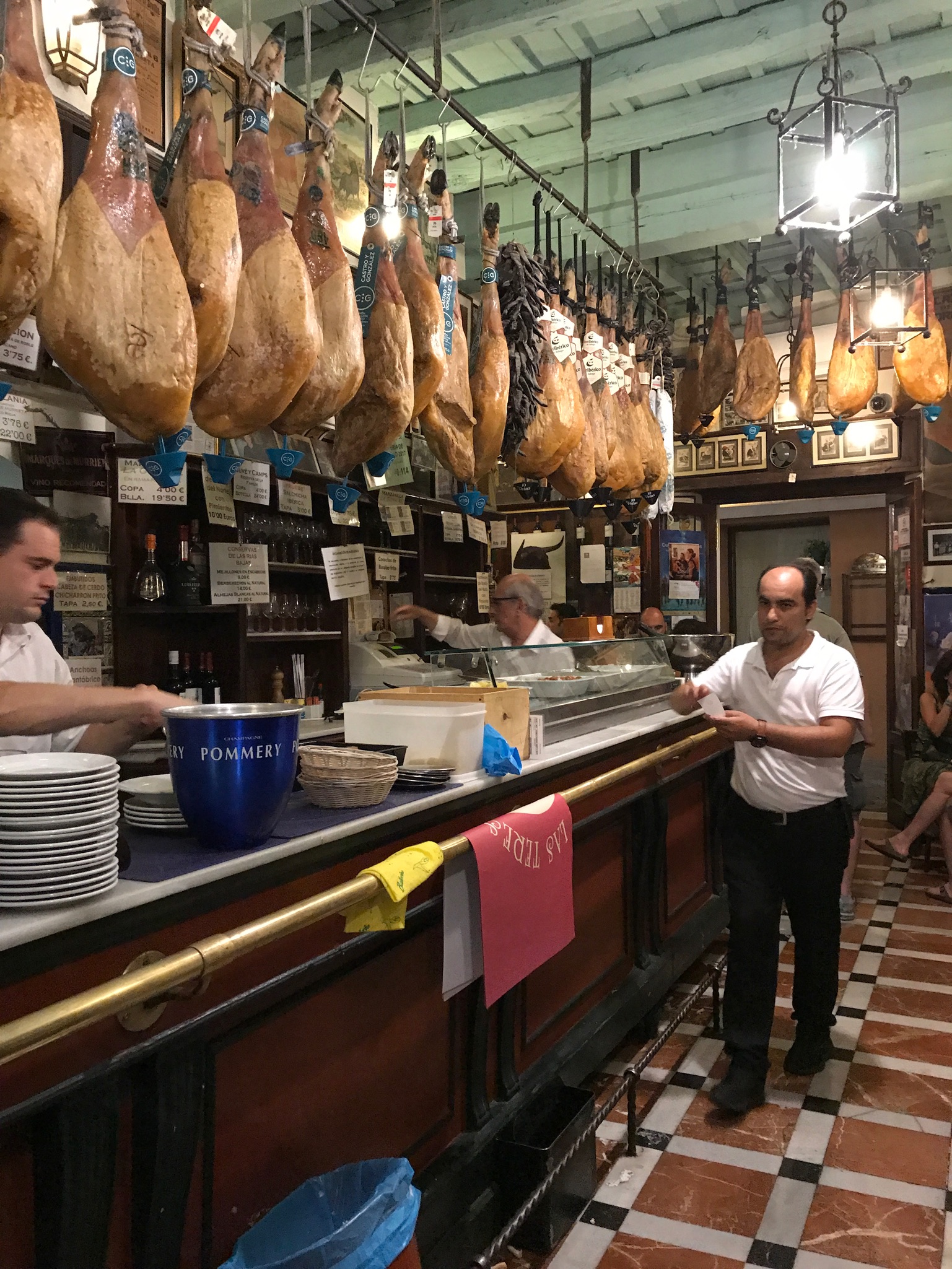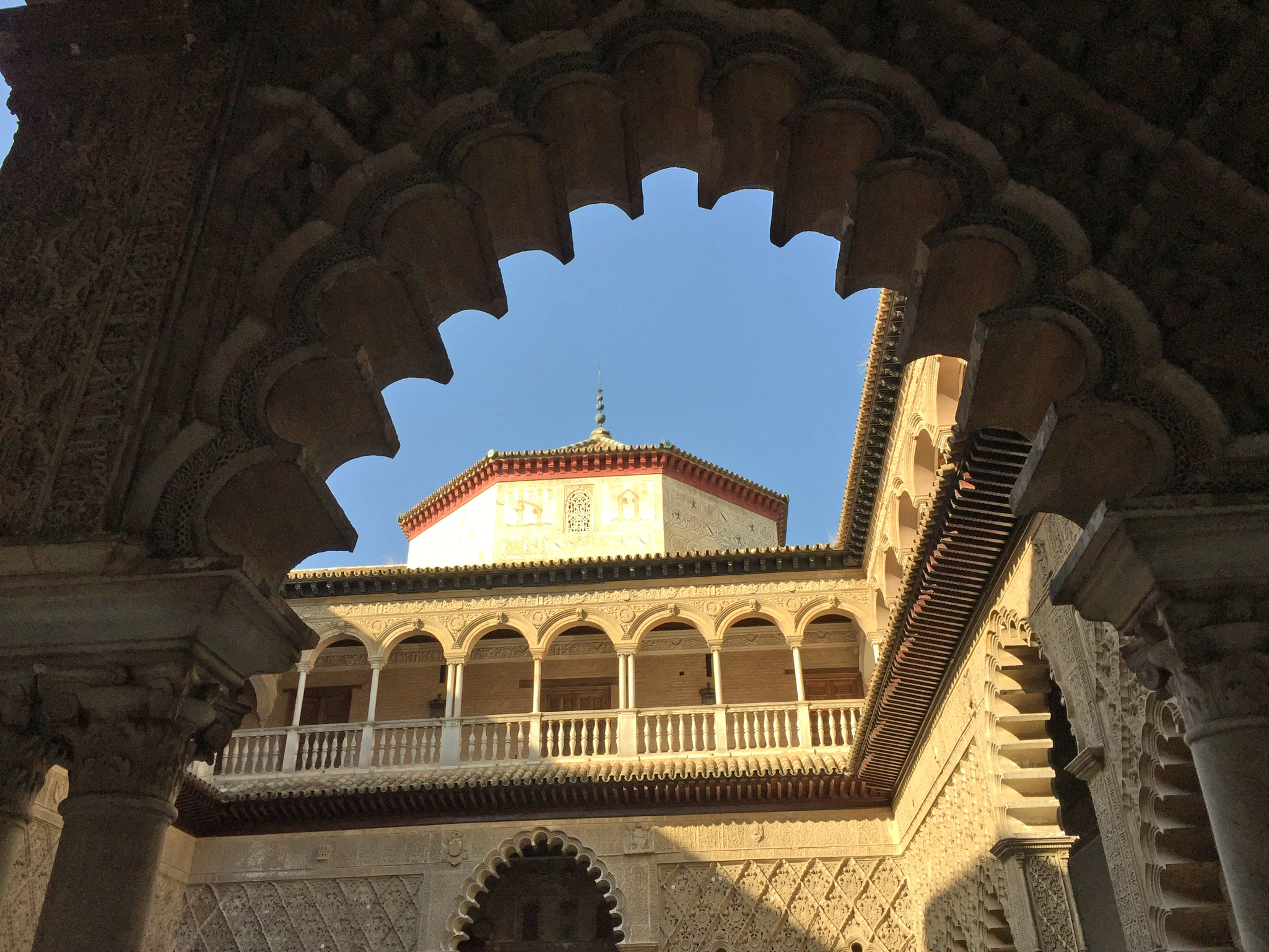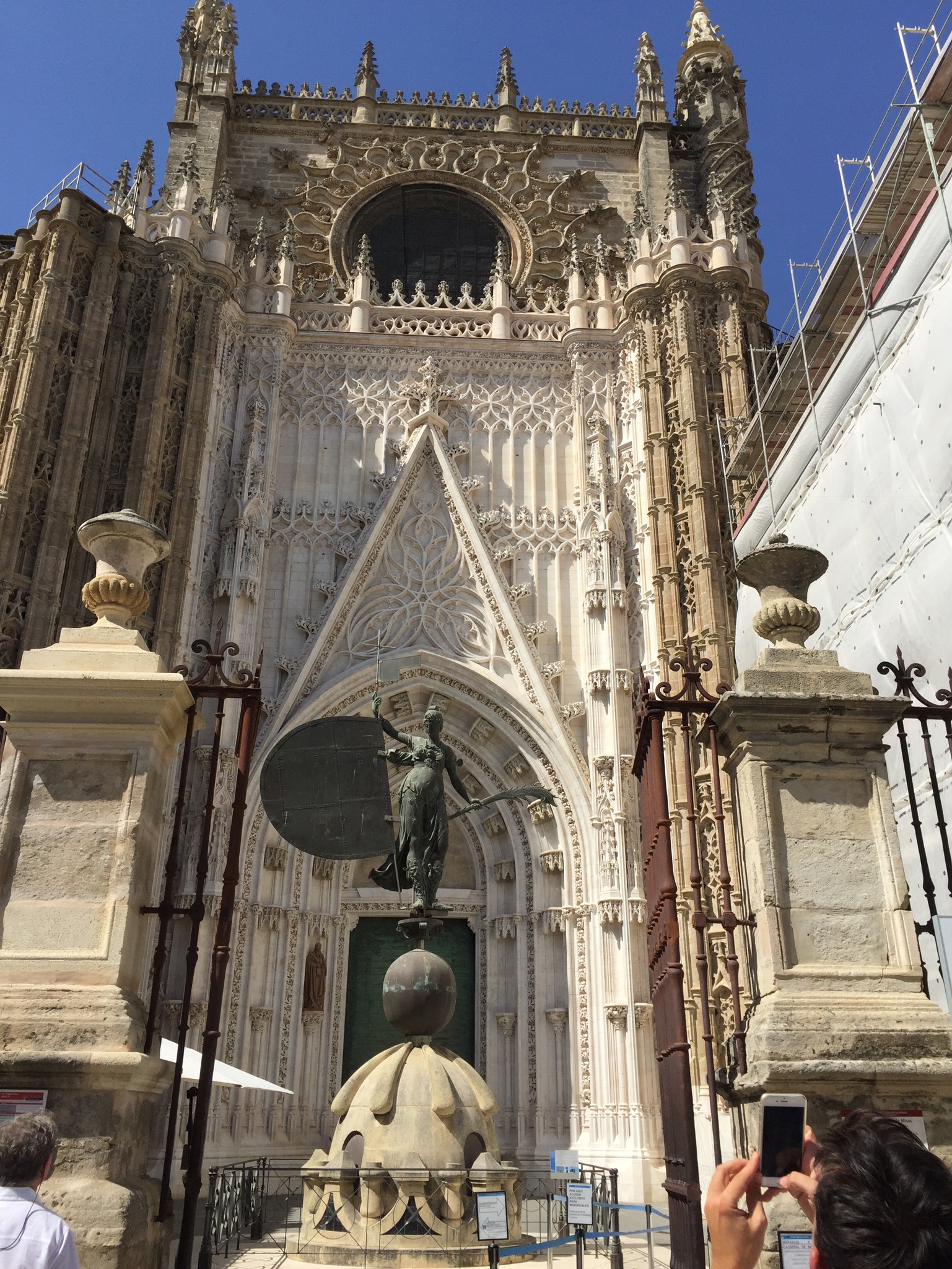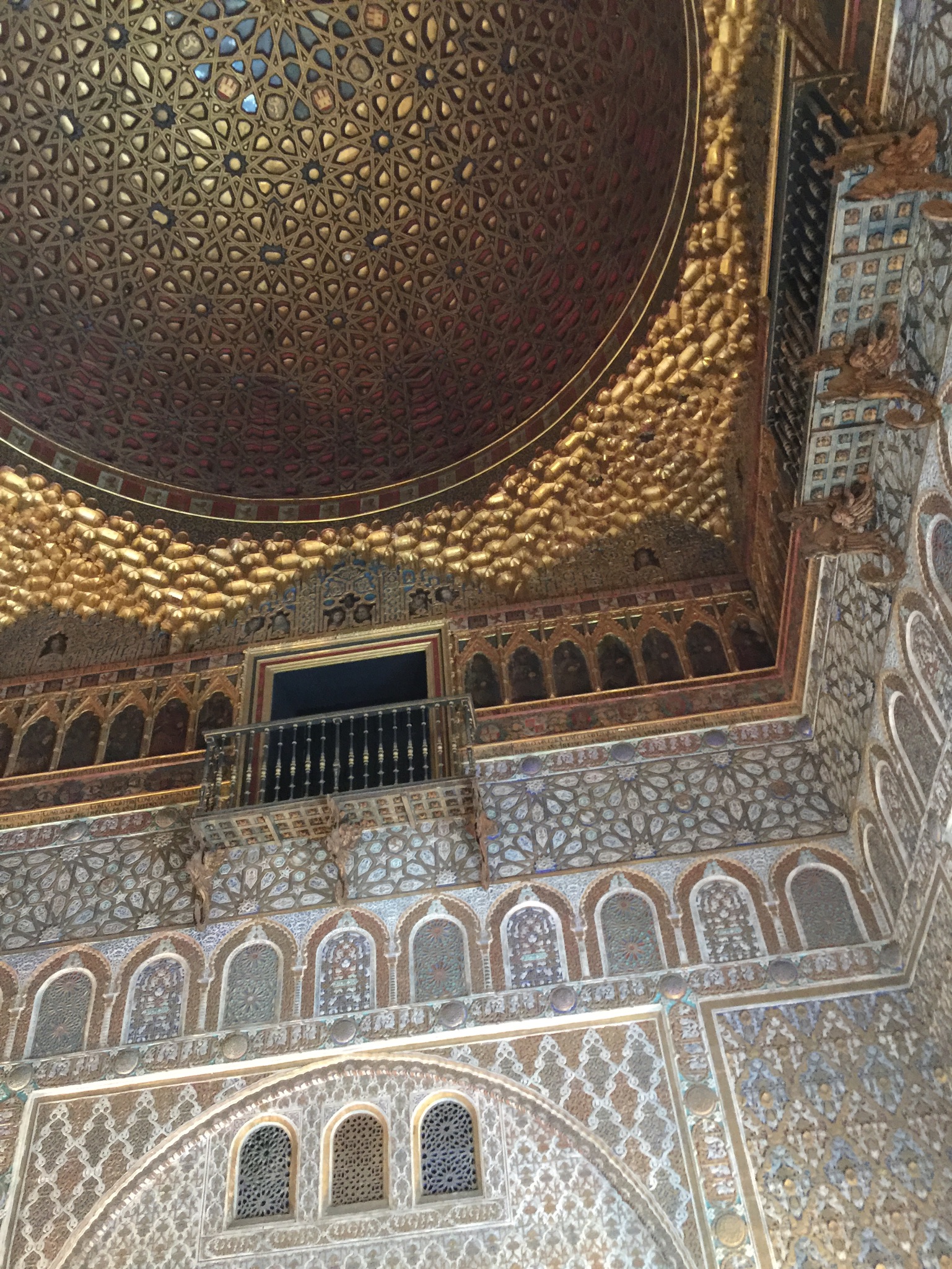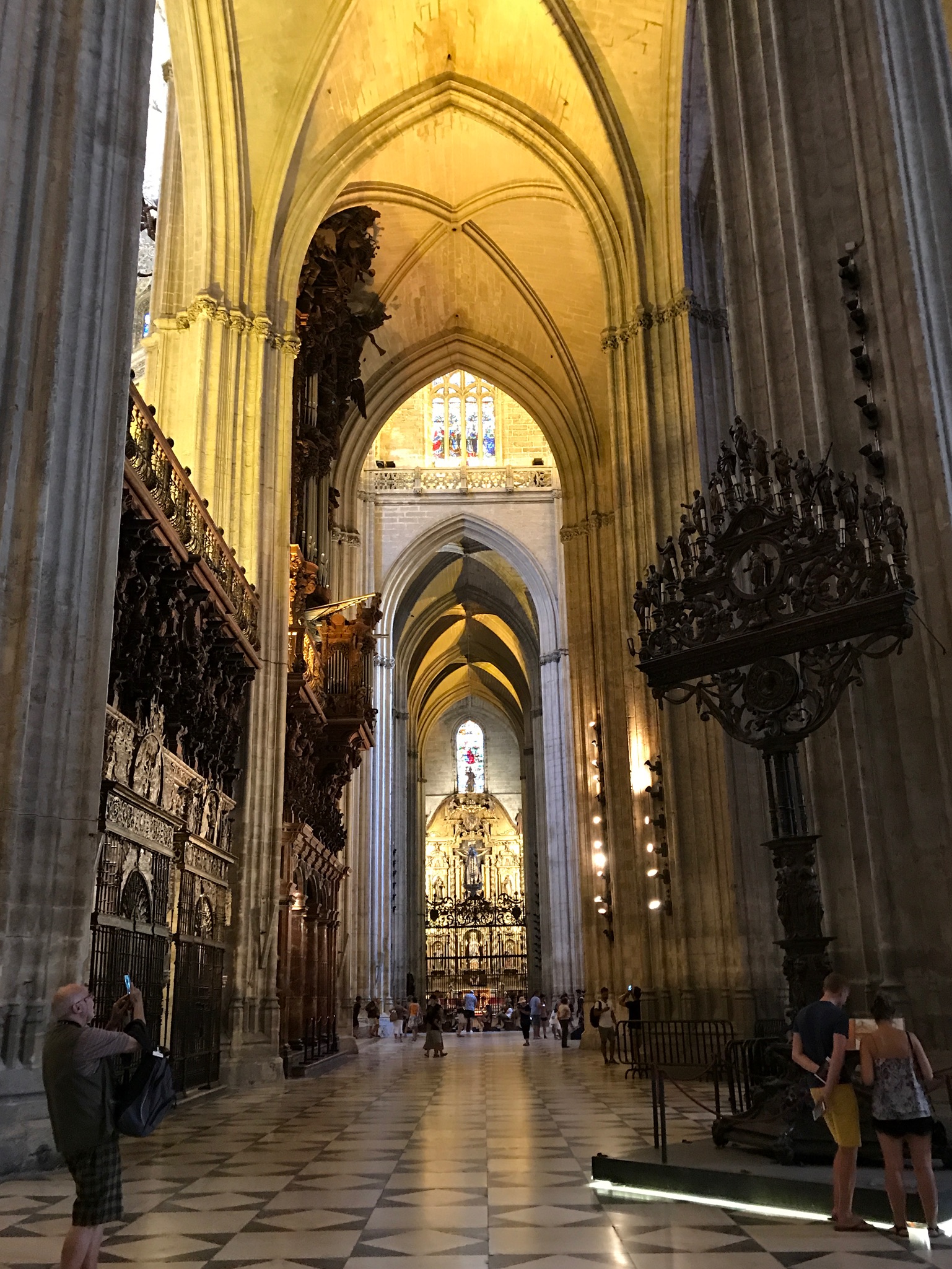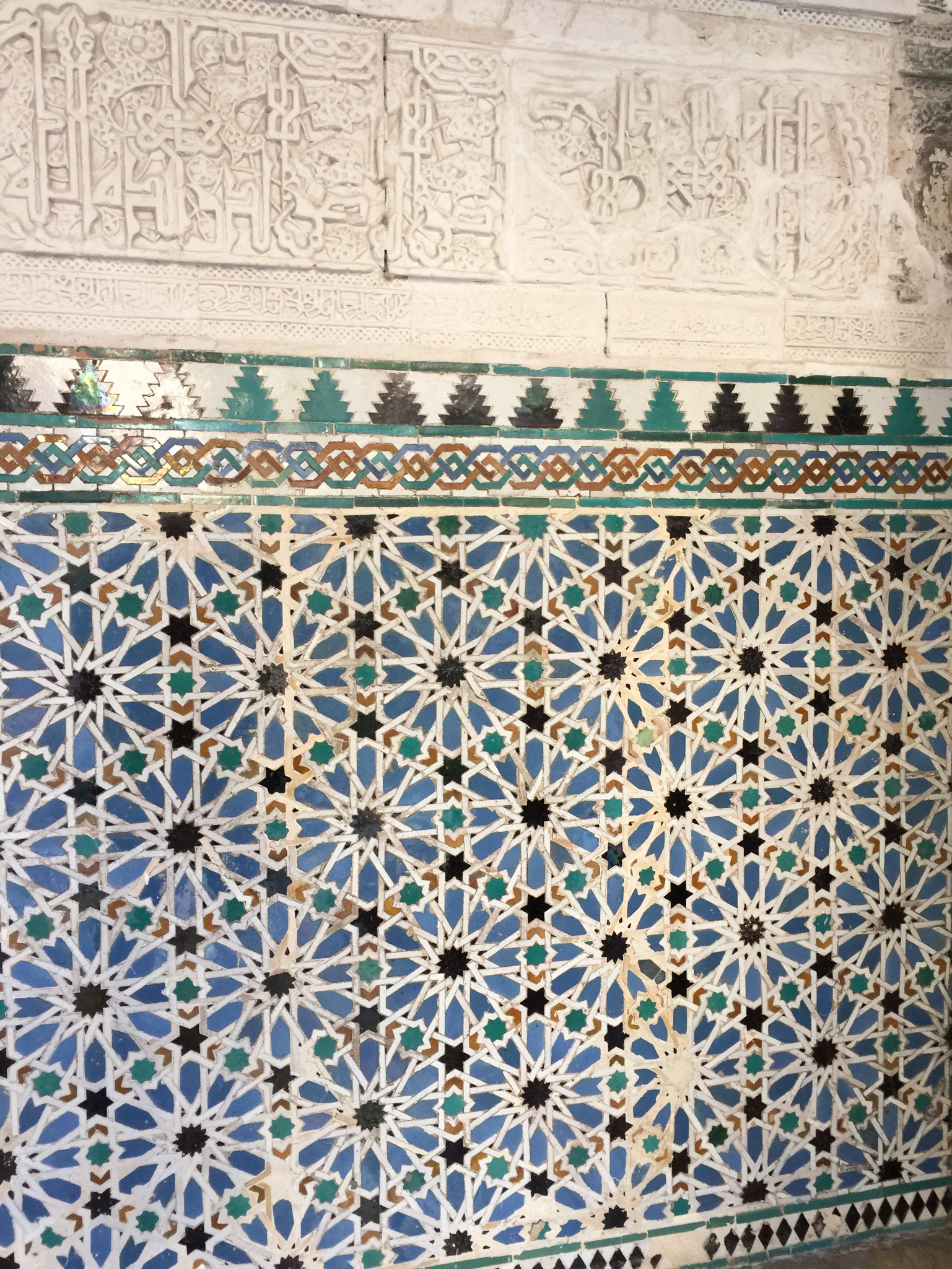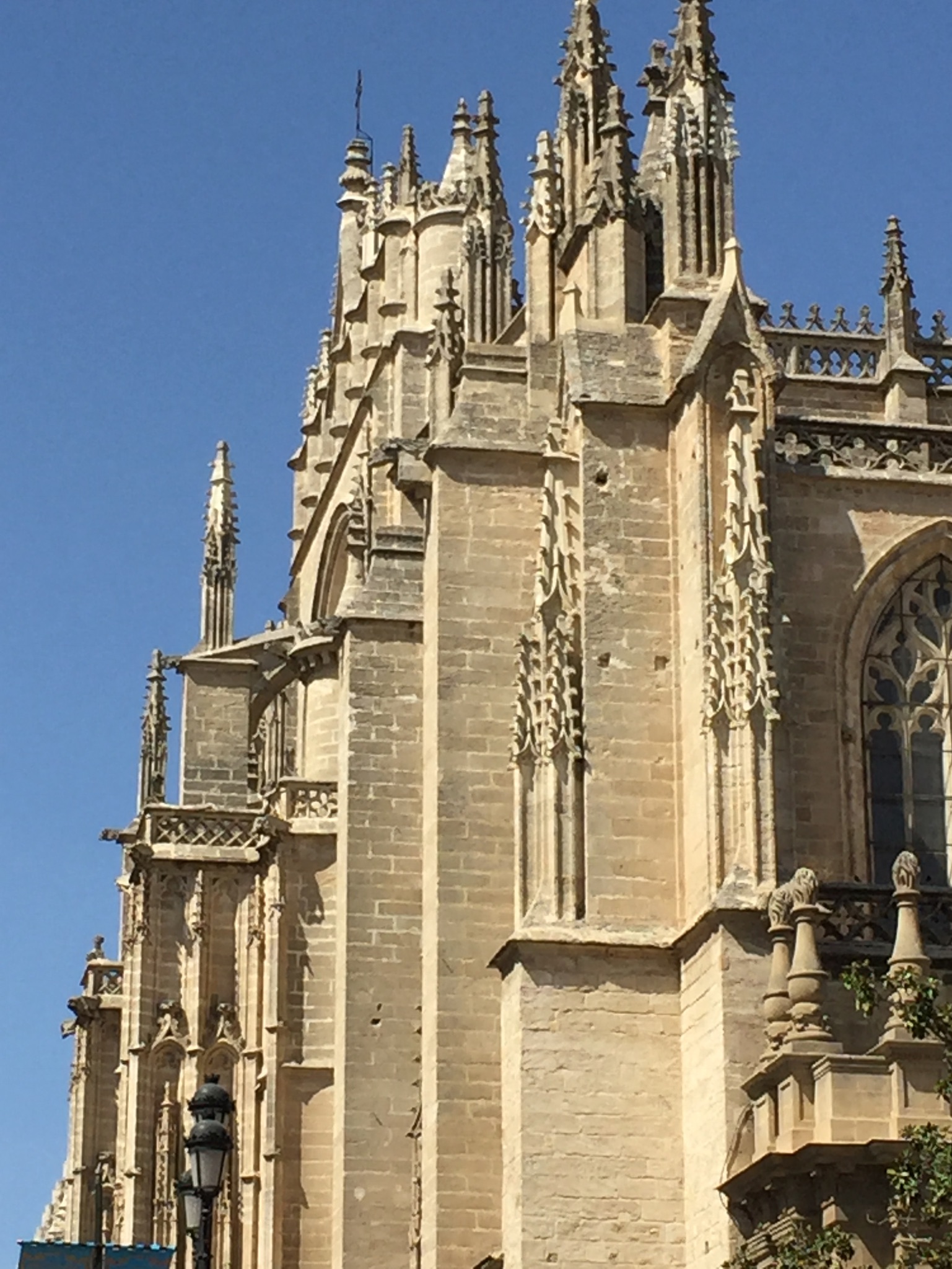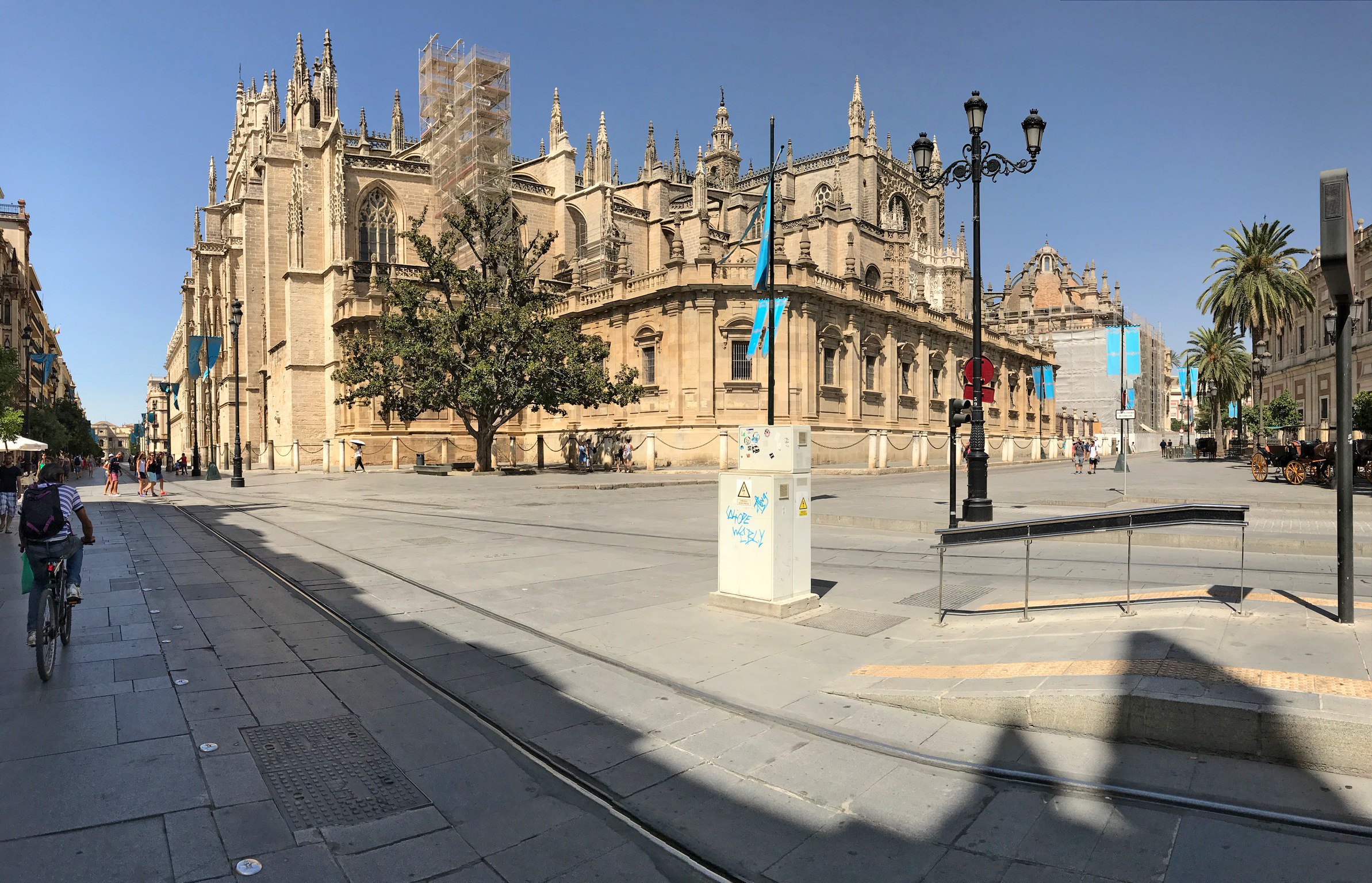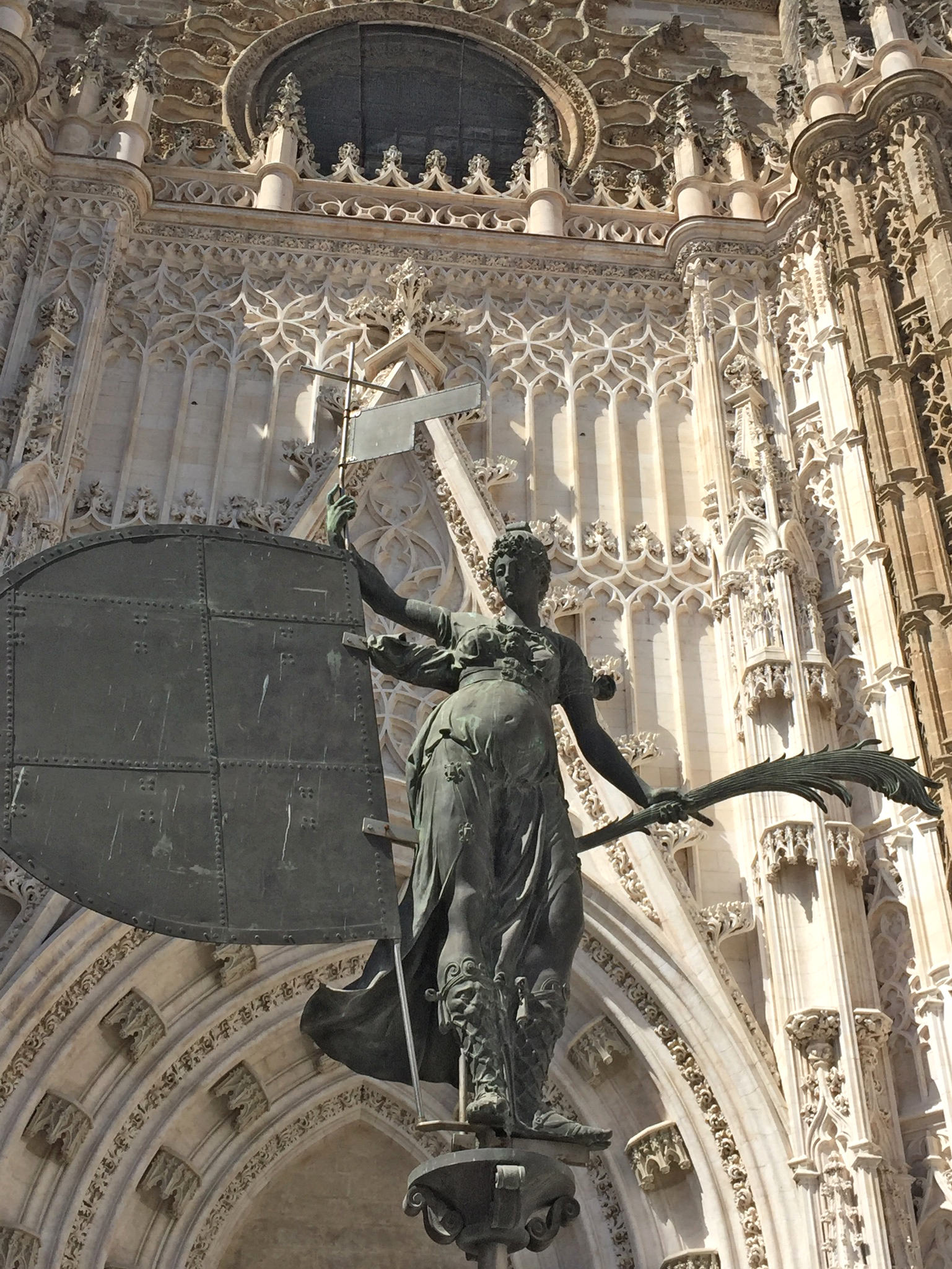We had figured out how to buy tickets to Alcazar online to avoid the very long line, and arrived on the dot at 9:30 am. I had read a little about its history before our visit, that it was built around 1 AD, and that it has been extended, redesigned and decorated by every culture in the area since. It has been a church, a kind of temple, a fortification, most recently a UNESCO World Heritage site, and is still a functioning royal palace.
It is overwhelmingly beautiful. The detail in typical Moorish design is fascinating, the gardens are massive and lush, each room tells a story from a different epoch, a different ruler. It is a history lesson of the area unto itself. One of the rooms, called the Admiral’s Hall, is the very spot where plans for the first trip around the world were made. The info at Alcazar reads: “This is the hall where the main pilot Amerigo Vespucci, Magellan and Eleano planned the first travel around the world and Juan de la Cosa made the first world map in history”. What monumental efforts, funded by governments---and what an accomplishment that stunned the world and changed it forever. We felt that idea so deeply, and that in our generation of the world, new levels of technology and freedom allow us to go around the world as individuals...such an adventure still, and such a privilege!
We spent a long time at Alcazar...finishing with tea under a row of shade trees in the garden. For more information on this incredible structure, please visit the website with the google translation for the best information.
Next we tried to get into the Cathedral next door...but the lines were still long, so we walked a long way! to a food market for lunch. Tuna salad never tasted so good. Of course after lunch, it was time for a siesta. At 4:00 we tried again at the Cathedral of St. Mary of the Sea, known simply as the Seville Cathedral. Another UNESCO World Heritage Site, it is the 3rd largest church in the world, the largest Gothic church in the world, and still recognized as the largest cathedral in the world. So, you can imagine that it is massive, daunting and stunning. Built first as a mosque, it was converted into the city’s cathedral upon Spanish conquest of Seville, and the minaret was converted into a bell tower. Southern Spain is such a fascinating story of conquest, colonies and eventual cooperation among cultures, proven out by its arts, its buildings and its people.
We walked from the Cathedral to a tapas bar in Santa Cruz, where we had noticed the famous Iberian ham hanging from the ceiling and enjoyed two portions of the delicious ham, a stewy beef dish, sardines in oil (believe me, they were delicious!), spinach with garbanzos and olives. Wonderful. While we were sitting there we heard raised voices from behind the bar, and the waiter came over and told us that they had just heard on the radio about the attack in Barcelona. Our hearts ache for the people of Spain, a country that has been without a terrorist incident for almost a decade. Our prayers go out especially to the families of those killed and wounded.
After our walk back to the hotel, we had a lovely quiet time. Tomorrow is an early start...to Tangier, Morocco.


